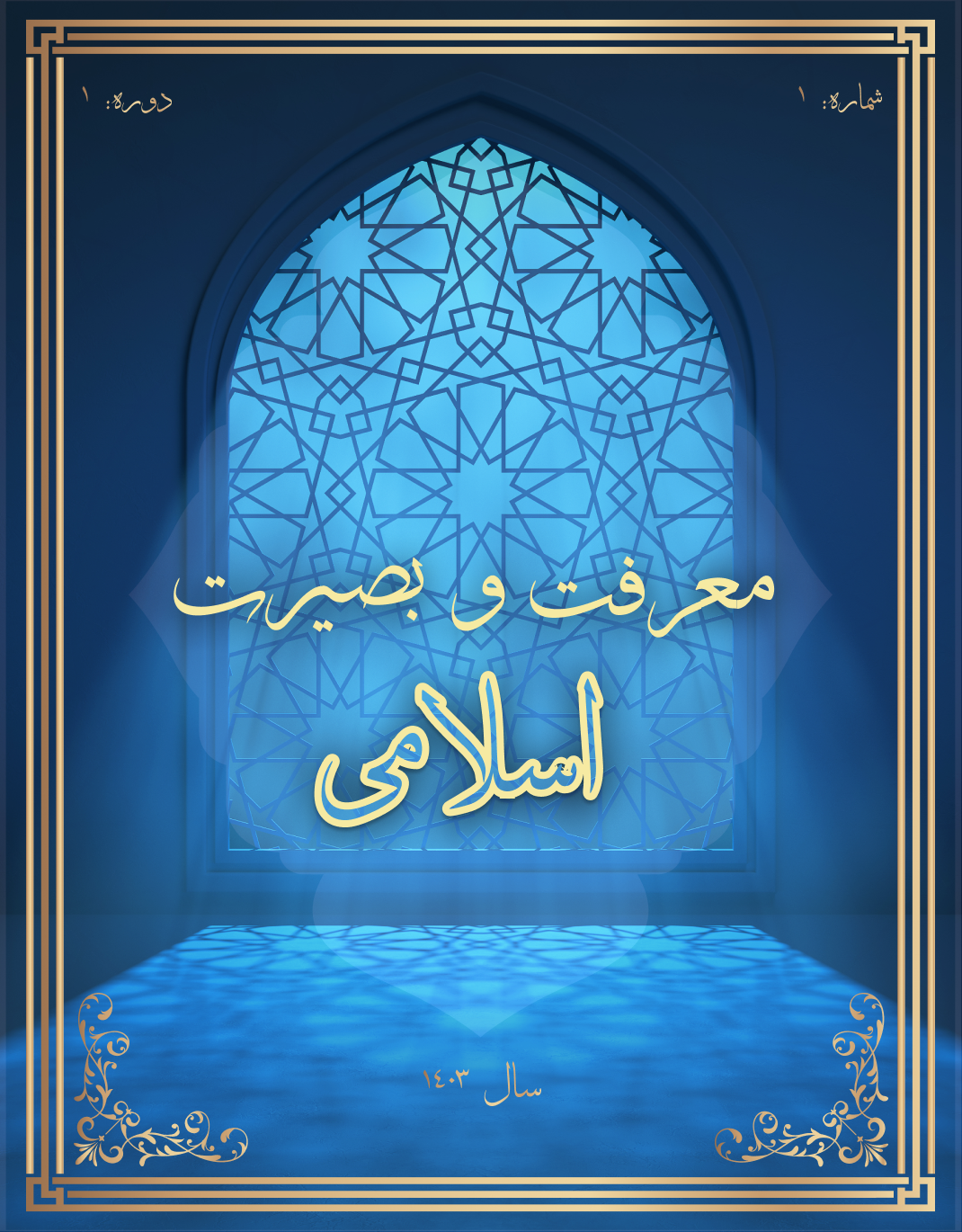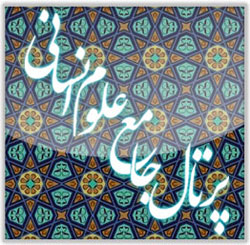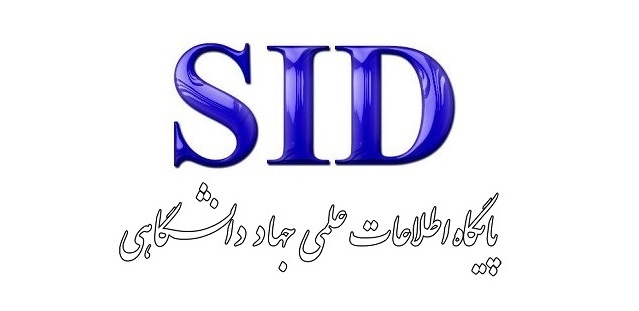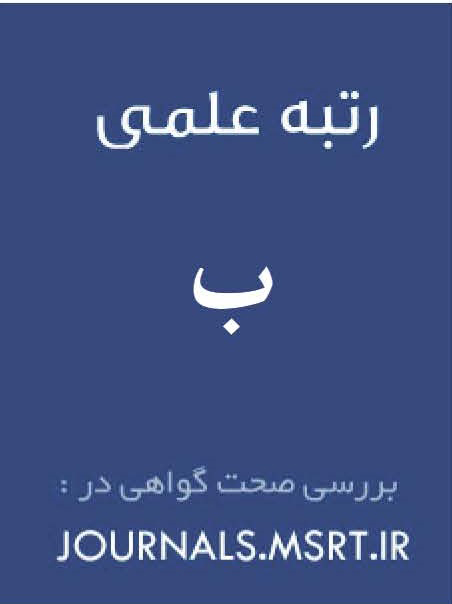بلاغت قرآن کریم از منظرامام رضا( علیه السّلام )
کلمات کلیدی:
بلاغت قرآن, امام رضا (ع) , زیباشناسی, علوم قرآنچکیده
چکیده
بلاغت قرآن به عنوان یکی از ابعاد اعجاز این کتاب الهی، همواره مورد توجه مفسران و اندیشمندان اسلامی بوده است.امام رضا (ع) به عنوان یکی از برجسته ترین شخصیت های علمی و دینی اسلام، نقش اساسی در تبیین جنبه های بلاغی قرآن ایفا کردهاند. این مقاله با رویکرد توصیفی- تحلیلی به بررسی دیدگاهها ی امام رضا (ع) در باره بلاغت قرآن می پردازد.یافته ها نشان می دهد که امام رضا (ع) با تاکید برهماهنگی معنایی و زبانی آیات، زیبا شناسی هنری متن، واستفاده دقیق ازواژگان وصنایع ادبی، تصویری جامع از بلاغت قرآن ارائه داده اند.امام رضا (ع) بلاغت قرآن را نه تنها به عنوان یک ویژگی زبانی،بلکه به عنوان ابزاری هدایتی واخلاقی می دانستند که پیام های الهی رابه شيوه ای موثروماندگار به مخاطب منتقل می کند.تحلیل های امام رضا(ع ) از بلاغت قرآن، برتاثیرات عمیق زبان قرآن درهدایت انسان ها تاکید دارد و نشان دهنده درک عمیق ایشان ازجنبه های زبانی و معنوی این کتاب مقدس است. همچنین دیدگاه های امام رضا (ع) برتناسب میان آیات و انسجام متن قرآنی تاکید دارد که الهام بخش مفسران ومتفکران اسلامی در قرون بعدی بوده است.این مقاله نشان می دهد که دیدگاههای امام رضا(ع) در باره بلاغت قرآن، تاثیرات عمیقی برعلوم قرآنی و تفسیر معاصر داشته و همچنان به عنوان منبعی ارزشمند برای تحلیل بلاغت قرآن شناخته می شود.
دانلودها
مراجع
Allport, G. W. (1961). Pattern and Growth in Personality. New York, NY: Holt, Rinehart & Winston. https://ia601408.us.archive.org/30/items/in.ernet.dli.2015.199562/2015.199562.Pattern-And-Growth-In-Personality_text.pdf
Bugental, J. F. T. (1965). The Search for Authenticity: An Existential-Analytic Approach to Psychotherapy. New York, NY: Holt, Rinehart & Winston. https://a.co/d/4cz3O4L
Bugental, J. F. T., Schneider, K. J., & Pierson, J. F. (2014). The Handbook of Humanistic Psychology: Theory, Research, and Practice. California: SAGE Publications. https://doi.org/https://doi.org/10.4135/9781483387864
Darabi, J. (2018). Theories of personality psychology (Comparative approach). Tehran: Ayij Publishing.
Deci, E. L., & Ryan, R. M. (1980). Self-determination Theory: When Mind Mediates Behavior. The Journal of Mind and Behavior, 1(1), 33-43. https://www.jstor.org/stable/43852807
Feast, G. J., Roberts, T., & Face, J. (2012). Theories of personality. Tehran: Ravan Publishing.
Frankl, V. E. (1984). Man's Search for Meaning: An Introduction to Logotherapy. California: Touchstone. https://a.co/d/7QFIZ1c
Ibn Manzur, M. b. M. (1993). Lisan al-Arab (Vol. 2). Beirut: Dar al-Sader.
Kamalvand, P., & Mohammad Ali Nejad, R. (2016). Comparative conceptualization of self-esteem in the Quran and humanistic psychology. Journal of Counseling and Psychotherapy Culture, 7(27), 1-32.
Makarem Shirazi, N. (1995). Tafsir-e Namuneh (Vol. 14). Tehran: Dar al-Kutub al-Islamiyyah.
Maslow, A. H. (1968). Toward a psychology of being. New York: Insight Books; D. Van Nostrand Company. https://archive.org/details/towardpsychology1968masl/page/n8/mode/1up
Maslow, A. H. (1987). Motivation and personality. Longman Publishers. https://a.co/d/4FlO206
Maslow, A. H. (1993). The Farther Reaches of Human Nature. Louisiana: Arkana. https://a.co/d/fys7dNN
Miri, S. M. H., & Khademi Afzal, F. (2018). An examination and critique of Abraham Maslow's view on self-actualization with an emphasis on Islamic sources. Journal of Comparative Exegesis Studies, 4(7), 57-78.
Noorbala, A. A. (2011). Mental-social health and strategies for improvement. Iranian Journal of Psychiatry and Clinical Psychology, 17(2), 151-156.
Pourafkari, N. (2003). Comprehensive dictionary of psychology and psychiatry and related fields. Tehran: Contemporary Culture Publishing.
Raghib Isfahani, H. b. M. (1993). Al-Mufradat fi Gharib al-Quran. Damascus, Beirut: Dar al-Qalam.
Rogers, C. R. (1995a). On Becoming a Person: A Therapist's View of Psychotherapy. California: HarperOne. https://a.co/d/cArrBd8
Rogers, C. R. (1995b). A Way of Being. California: HarperOne. https://a.co/d/78G7jj7
Rosenberg, M., & Owen, J. (2020). Self-esteem and its role in resilience. London: Sage Publications.
Schultz, D. P., & Schultz, S. E. (2012). Theories of personality. Tehran: Virayesh Publishing.
Smith, E. R., & Mackie, D. M. (2021). Social psychology. New York: Psychology Press.
Snyder, C. R., & Lopez, S. J. (2014). Positive Psychology: The Scientific and Practical Explorations of Human Strengths. New York: SAGE Publications. https://a.co/d/30RzFhv
Tabatabai, M. H. (1997). Al-Mizan (Vol. 6). Qom: Dar al-Ilm.
Veysi, O., Amiri, M., & Mohammadi, M. (2021). A comparative study of the concept of mental health from the perspective of Islam and modern psychology. Journal of New Advances in Psychology, 4(40), 23-45.
Abu Hilal al-Askari, Y. B. M. (1998). Al-Furuq al-Lughawiyyah. Nashr al-Ilm wa al-Thaqafah, Cairo, Egypt.
Al-Hashimi, A. (1987). Jawahir al-Balagha fi al-Ma'ani wa al-Bayan wa al-Badi'. Al-I'timad Press, Cairo.
Bahjatpour, A. K. (2008). Tafsir Hamgam ba Wahy (Vol. 2). Nasher Sibt al-Nabi, Qom, Iran.
Baqai, I. B. O. (2008). Nazm al-Durar fi Tanassub al-Ayat wa al-Suwar. Dar al-Kutub al-Ilmiyyah, Beirut, Lebanon.
Firuzabadi, M. B. Y. Al-Qamus al-Muhit. Dar al-Jil, Beirut, Lebanon.
Ibn Faris, A. H. (2003). Maqayis al-Lugha. Dar Ihya al-Turath al-Arabi, Beirut, Lebanon.
Ibn Hisham, A. M. (1955). Al-Sirah al-Nabawiyyah. Cairo, 2nd ed.
Ibn Nadim, M. B. I. Al-Fihrist.
Jorjani, A. B. (2003). Dalail al-I'jaz fi Ilm al-Ma'ani. Dar al-Kutub al-Ilmiyyah, Beirut.
Khoei, A. Q. (2016). Al-Bayan fi Tafsir al-Quran. Dar al-Zahra, Beirut, Lebanon.
Khorramshahi, B. D. (1998). Daneshnameh Quran wa Quran Pazhuhi. Tehran: Golshan Publishing.
Mahdi Zaytoon, A. (1992). I'jaz al-Quran wa Asarahu fi Taqaddum al-Naqd al-Adabi. [Place of publication not identified].
Mir Mohammadi Zarandi, A. F. (2021). Researches in the History of the Quran and Its Sciences. Dar al-Ta'aruf, Beirut.
Rajabi, M. (2004). Methodology of Quranic Interpretation. Research Institute of Hawzah and University, Qom, 13th ed.
Safavi, K. (2004). From Linguistics to Literature. Research Institute of Culture and Art, Tehran.
Safavi, S. (2020). Structural Interpretation of Surah Al-Imran. Nasher Salman Azadeh.
Suyuti, J. D. (1989). Mu'tarak al-Quran fi I'jaz al-Quran. Dar al-Fikr al-Arabi, Beirut.
Suyuti, J. D. (1993). Al-Itqan fi Ulum al-Quran. Muntasharat al-Razi, [Place of publication not identified], 2nd ed.
Tabarsi, F. B. H. (1968). Jawami' al-Jami'. Tehran University Press.
Tabarsi, F. B. H. (1971). Majma' al-Bayan fi Tafsir al-Quran. Nashr Bayan Javan, Qom.
Tabatabai, M. H. (2023). Al-Mizan. Islamic Publications Office.
Taftazani, M. S. D. Mukhtasar al-Ma'ani. Qom: Dar al-Fikr.
Wahidi Nishaburi, A. (2004). Asbab al-Nuzul. World of Books Publishing, Beirut.
Zamakhshari, M. B. O. (1999). Al-Kashaf. Maktabah Wahbah, Cairo, Egypt.
Zarqani, M. A. (1989). Manahil al-Irfan. Dar Ihya al-Kutub al-Arabiyyah, Cairo, Egypt.
دانلود
چاپ شده
ارسال
بازنگری
پذیرش
شماره
نوع مقاله
مجوز
حق نشر 2025 عیسی مدنی (نویسنده); محمد حسین توانایی سره دینی; تهمینه پارسایی (نویسنده)

این پروژه تحت مجوز بین المللی Creative Commons Attribution-NonCommercial 4.0 می باشد.







